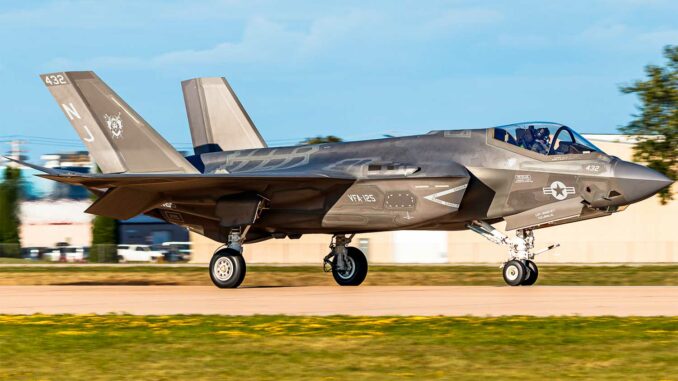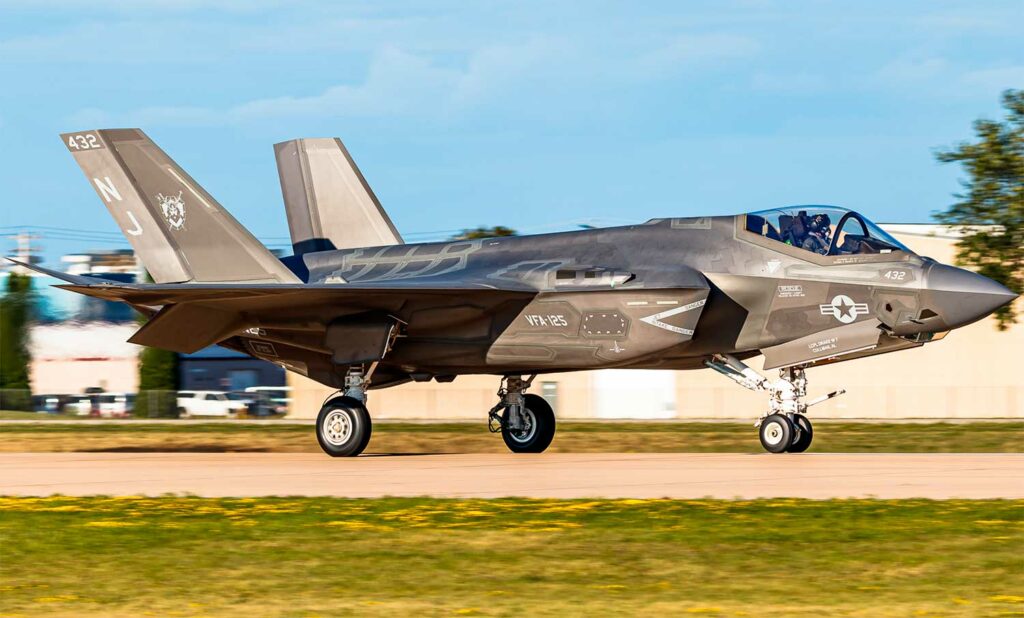
The Swiss contract for 36 F-35 fighter jets is under review: the bill has risen by €1.3 billion, sparking a strategic and budgetary debate.
A strategic acquisition that has become a source of tension
The contract signed in 2022 between Switzerland and Lockheed Martin for the acquisition of 36 F-35A fighter jets was then estimated at 6 billion Swiss francs, or approximately 6.2 billion euros. At the time, this controversial choice was justified on the basis of performance, stealth and compatibility with the NATO environment, even though Switzerland is not a member of the Alliance. Two years later, a €1.3 billion increase in the estimated cost sent shock waves through Swiss political and military circles.
This budgetary drift fueled a technical and strategic debate within the Confederation. On July 1, 2025, the Federal Parliament launched an official investigation. Several factors were called into question: the revaluation of industrial costs by Lockheed Martin, exchange rate fluctuations, inflation on critical materials, and uncertainties about the exact scope of the equipment delivered.
At the heart of the controversy is also the associated weaponry. Several experts have criticized the contract for focusing on the platform but under-equipping it with air-to-air missiles and air-to-ground munitions, raising fears that Switzerland is purchasing a high-performance but only partially operational fighter jet. For a country with no offensive military, this lack of clarity raises serious doubts about the actual strategic use of these aircraft.
The “F-35 affair” is becoming a cross-cutting issue: the real cost, technological dependence, compatibility with Swiss defense doctrine, and transparency of the procurement process are now at the heart of the debate.
A contract renegotiated in an unstable industrial context
In September 2022, Lockheed Martin approved a lump sum price for Switzerland that included the aircraft, logistical support, simulators, and part of the armament. However, the 2025 budget documentation provided to the defense committee reveals a 21% increase in the total cost, or approximately $7.5 billion. This figure has not been officially disputed by armasuisse, the federal agency responsible for military procurement.
The argument put forward by US manufacturers is based on increased unit costs for electronic components, the uncertainties of the post-COVID global supply chain, and higher technical wages in F-35A assembly plants in the US. Critical parts, such as radar processing modules and the F135 engine’s swivel nozzles, are seeing their prices rise by 15 to 25% depending on the batch.
In addition, Switzerland has to contend with an unfavorable euro-dollar exchange rate: in 2022, parity was close to 1:1, but in 2025, one dollar will be worth 1.06 euros, which will automatically increase the payments made by the Swiss Confederation.
Technical renegotiations between armasuisse and Lockheed Martin began in early 2025, but without public transparency. The contract does not provide for a downward indexation mechanism in the event of initial overvaluation. As a result, several members of parliament accuse the government of signing a rigid agreement without sufficient guarantees against market developments.

An arms architecture deemed incomplete
The other central issue of the investigation is ammunition procurement. According to several sources within armasuisse, the initial contract would only cover 30% of the actual armament requirements for the 36 aircraft. In particular, the order would only include 72 AMRAAM missiles (two per aircraft), with no air-to-ground offensive capability other than a few GPS-guided bombs.
This figure is considered insufficient by many Swiss army officers. By comparison, the current F/A-18s are equipped with more than 200 active air-to-air missiles and several hundred guided bombs. As the F-35 is supposed to completely replace these fleets by 2030, the weakness of the associated arsenal raises questions.
The National Council’s Security Policy Committee believes that the arms budget should be doubled, which would represent an additional cost of around €900 million. This amount is not included in the official budget and would require a separate parliamentary procedure to be approved.
Military experts are also warning of total dependence on the United States for ammunition replenishment, access to mission system source code, and engine software maintenance. This dependence is seen as a major strategic limitation, particularly in the event of political differences between Washington and Bern.
A political dimension that has become a matter of state
The controversy goes beyond the military sphere. Several left-wing and centrist politicians have denounced a lack of transparency in the budget approval process. The Federal Office for Armament allegedly failed to forward certain documents to the Finance Control Committee, in particular those relating to options not included in the base price.
This situation has led the Swiss Socialist Party, as well as members of the Green Party and the Center Party, to call for the partial suspension of the contract until further notice. Such a decision would entail contractual penalties of several hundred million euros.
The issue is also dividing public opinion. A new SSR poll published in June 2025 shows that 52% of citizens want a complete review of the purchase, compared to 41% who support maintaining the contract in its current form. This result reflects a loss of confidence in the state’s ability to manage a purchase of this magnitude.
On the government side, Defense Minister Viola Amherd has attempted to play down the issue, referring to “a normal adjustment phase.” But this statement has been contradicted by several analysts, who believe that exceeding €1.3 billion is no small matter for a country with a limited military budget (approximately €6.4 billion per year).
A fundamental reflection on the role of the F-35 in Swiss doctrine
The debate surrounding the F-35 raises a broader question: what place does a stealth, offensive, and interconnected fighter jet have in an army with a history of neutrality? The F-35 is designed to operate within a NATO network, with tactical data exchange, penetration missions, and precision strikes—roles that are not particularly compatible with Switzerland’s defensive posture.
By integrating this platform, Switzerland is agreeing to become part of a multinational projection strategy, particularly through the cooperation program for pilot training and software maintenance. However, this cooperation implies continued dependence on US standards, even though Bern claims strategic autonomy.
Some senior officers are calling for a review of doctrine. They believe that a fighter jet such as the F-35, despite its technical qualities, is not suited to defending neutral airspace based on deterrence and selective interception. Others argue that it is essential to have a state-of-the-art aircraft in order to counter evolving hybrid threats and regular incursions by military aircraft into European airspace.
The acquisition of F-35s by Switzerland raises major questions about budgetary balance, technical sovereignty, and the suitability of the platform for the doctrine. The €1.3 billion cost overrun, combined with possible operational shortcomings, has exposed flaws in planning, parliamentary oversight, and defense strategy. The parliamentary committee will have to determine whether this contract was managed, steered, or imposed. The outcome will have direct consequences for Swiss air defense in the coming decades.
War Wings Daily is an independant magazine.